Developed by: Insomniac Games
Published by: Sony Interactive Entertainment
Released: April 12th, 2016
Reviewed: December 27th, 2016
One of the worst things about owning a PS4 is looking at that extensive catalog of PS2 and PS3 games (including the games already in my house) and constantly dealing with the fact that I cannot play any of it. Heavy Rain and The Last of Us were iconic PS3 games, but now there are PS4 remasters to throw money. Ico and Shadow of the Colossus are classic titles, but they could barely make time to release The Last Guardian, let alone any HD remasters. If I wanted to play the Prince of Persia trilogy, God of War, or Sly Cooper, I could either dig up my old console or pay an extra subscription/rental fee for what are essentially gaming rites of passage.
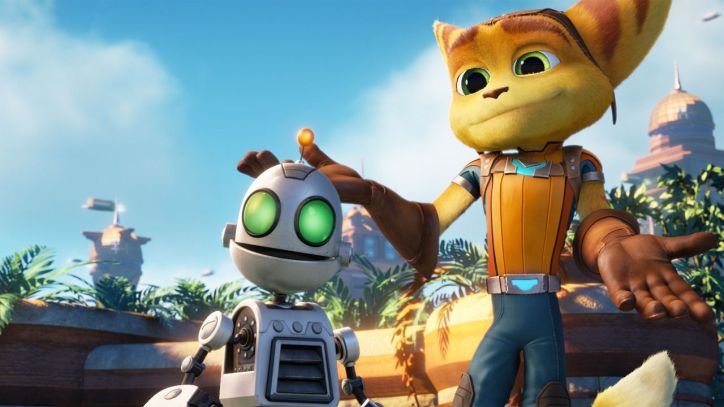
Given my continually evident enmity, Insomniac’s approach to accommodating the lack of backwards compatibility surprised me. Ratchet and Clank (2016) is a remake (complete, ground-up redesign) of the original Ratchet and Clank from 2002 with the intention of retelling the story from the beginning using improved visuals, character animations, and performance. The problem is that these full remakes cost about the same to develop as an entirely new game, making it nowhere near as economical as rereleasing old properties with a resolution and performance bump. As a result, Ratchet and Clank (2016)’s quality is both a joy and a travesty.
It is a joy because Ratchet and Clank (2016) made me nostalgic for a period is gaming history that I was never a part of. Sony mascot games had largely eluded my when I got my first PS2, yet the simple elegance of the gameplay had me charmed from the beginning. The main protagonist, Ratchet, is a Lombax working for a mechanic on his home planet when he meets and teams up with Clank. By trade, his main melee weapon is his wrench, although I personally could not think of a more boring way to play this game. What gives the game its edge is the extensive arsenal of powerful firearms at the Lombax’s disposal.
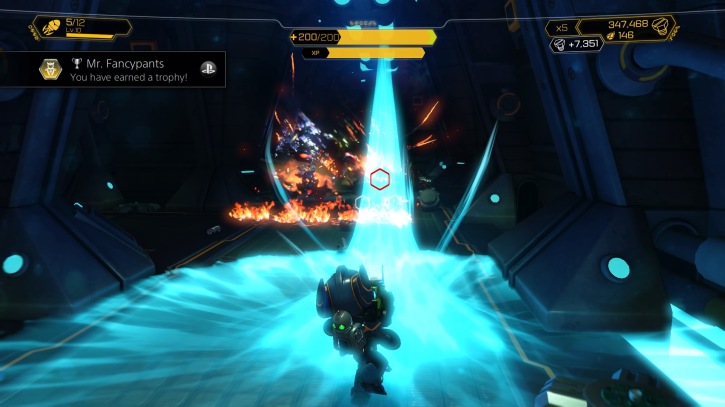
Along his journey, Ratchet will collect a serious of increasingly devastating (and sometimes hilarious) guns to use on the untold number of enemies looking to tan his orange hide. These include small fire blasters; flamethrowers; missile launchers (homing and non-homing kinds); proton drums; a Pixelizer; a second, more murderous robot companion; weaponized disco balls; and a ray gun that turns enemies into sheep. The diverse and colorful weaponry keeps every encounter feeling fresh, as different encounters necessitate more than just one weapon. Ratchet collects Bolts and Raritanium crystals to enhance his weapons with different modifications, i.e. fun new ways to wreak havoc.
In Ratchet and Clank (2016), the enemies are just as impressive as the means by which to ruin their days. First is their astounding variety. Robotic foes and organic aliens of many separate species all come after Ratchet and Clank. These include small charging enemies like the sandsharks, robomutts, chompers and horny toads (no seriously that is what they are called) who will run toward the player in swarms. Other enemies such as the Blargian troops, Alien Spitters, and Warbots are stronger and have dangerous ranged attacks. Then there are the Amoeboids, which start out large and split into more, smaller enemies with sustained gunfire. Although some of the NPCs can look like Jimmy Neutron rejects, Insomniac’s dedication to their collection of bad guys is continually marvelous.
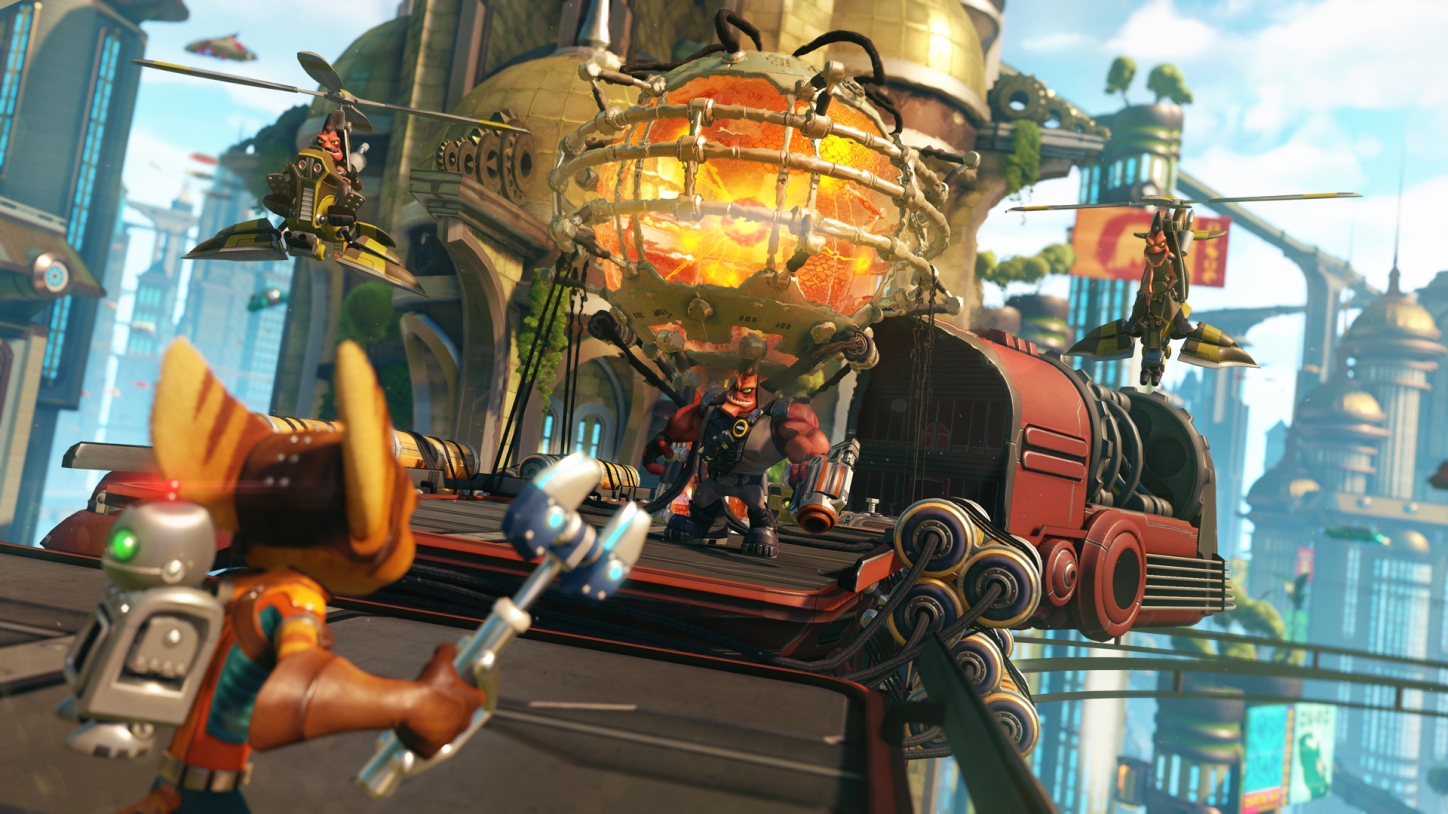
The Ratchet and Clank (2016) bestiary also has wonderful animations. Movements are fluid and well defined, even as dozens of enemies come toward the player. Their attack animations are often explosive and cartoonish, with creatures occasionally swelling as they raise their fists, jaws, claws to strike. Although that easily could have been silly in any other game, it matches the “playable-Pixar” aesthetic. The way enemies react to being fired upon is also well designed. The different creatures express pain, damage, and fear in different ways. Crabs will shudder and flail when blasted with a flamethrower, while Blarg helicopters break apart and catch fire when shot with missiles. This all adds to a livelier and more satisfying combat experience.
Like other Sony mascot games, Ratchet and Clank (2016) has a bit of light platforming in addition to combat. It is nothing as extensive as an Assassin’s Creed or Uncharted game, but it does make up a significant component of the challenge. Timing jumps across floating surfaces or around lasers test player coordination. Most of the platforming, and the upgrades involved with it, help Ratchet collect secret collectibles scattered across the map. Gold bolts, Holocards, RYNO cards, and other secret collectibles can be found with help from jetpacks, Magneboots, or strategic jumping. Otherwise, gunning down robots and alien creatures makes up the bulk of the experience.
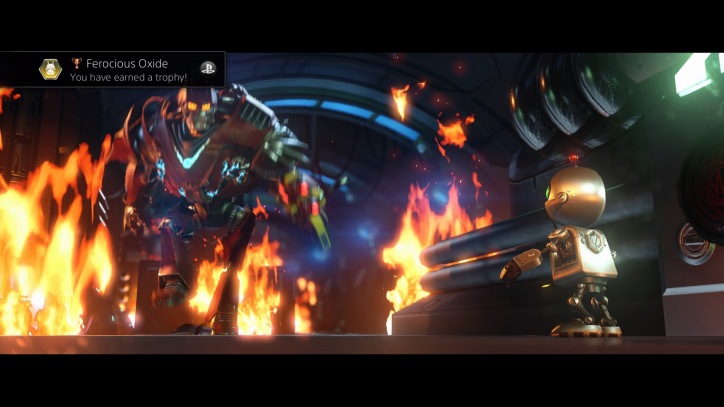
For a change of pace, some sections require Clank to enter hard-to-reach places alone. In these areas, Clank usually solves puzzles on how to get from one end of the room to another. He programs little robots to perform three functions: power, bridge or springboard. While I have to admit that many of the puzzles are stunningly clever, they can also be stunningly tedious. The frantic fun of Ratchet’s gameplay gets ground to a halt during these Clank puzzles. The Clank sections do not need to be thrilling hover board races, but I should not recoil at the idea of doing them.
Joy is an effective word for describing what I feel about the gameplay. It is wild, colorful and exciting; it felt like a welcome reminder of how bright and creative video games could be. This is a delightful gameplay experience to charm both older and younger players. In this respect, the franchise that helped build the PlayStation brand is able to make it shine again. However, the travesty comes in the parts where Insomniac was not so imaginative. With as much as I have complimented the mechanics of Ratchet and Clank (2016), I must disparage their characters and narrative in equal measure.

I can effectively summarize the overarching narrative as Star Wars: The Phantom Menace, insomuch as both are about gifted child pilots stagnating on desert planets yet predestined to do great things. Ratchet is essentially Anakin Skywalker. Hell, Clank even plays the role of a combined R2-D2 and C-3PO. They escape Rachet’s home planet with the help of an elite fighting force before inevitably saving the day from complete destruction. Now I actually liked the Star Wars prequels, but playing through the story of Ratchet and Clank (2016) really put that fan revulsion into context.
Oddly familiar plot aside, the characters in Ratchet and Clank (2016) are poorly written. The two leads have a supposedly franchise-spanning friendship, but their chemistry is incredibly weak. There is nothing to show how their relationship grew over time, or how the two are even compatible. They just exist near each other for the main missions until magically forming an unbreakable bond. Ratchet and Clank also have too little dialogue together: no witty banter, no personal anecdotes, and no growth. The game rushed into the plot and forgot to flesh out those taking part in it. With a bit of conversation, Clank might have been more to Ratchet than just the robot who helps him jump sometimes.
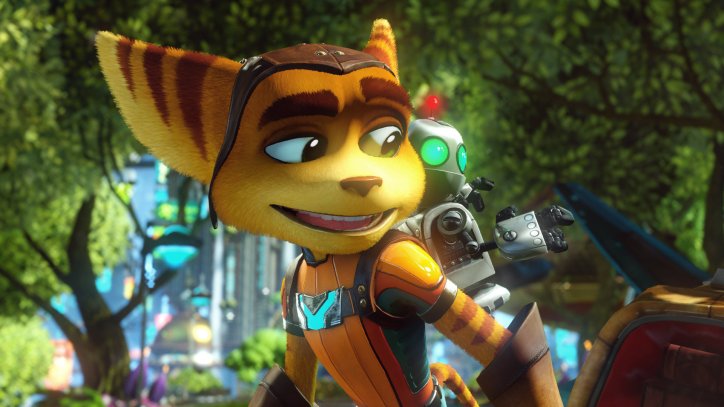
If the titular characters had such a tepid partnership, then there was no hope for anyone else. Calling them one-dimensional seems generous, since their meager dialogue barely offered a glimpse into their personality. There was no banter, no exposition, and no trace of individuality, save the differences in gender and species. Some of the non-distinct characters were plot-relevant space rangers, while others were reality TV stars, scientists, and even a villain. One of them even tried to betray Ratchet. These characters exist in only the most utilitarian sense. They are important to the plot in the same way that the floor is important to gameplay; it would be a lot emptier without them.
However, the most egregious offense this game commits is with the attempts at comedy. This game is aggressively humorless. At the best of times, most of the jokes end up landing flat on their faces, through either poor timing, minimal context, or predictability. At the worst of times, they are just plain aggravating. And every supposed joke is just so judgmental, making fun of other people or concepts within the game. The self-satisfied arrogance of the humor is matched only by lost potential. One scene involving the unreliable narrator device was criminally underutilized, treated like a throwaway line.

The joke that ruined it for me was the one aimed at a Blargian scientist. He was talking about his (admittedly evil) aspirations, passionately belting out polysyllabic science jargon, and Ratchet’s response was something like: “You’re probably still single, aren’t you?” Unless you tell them that their favorite anime preteen should not have 36DD breasts, jabs at their hobbies rarely offend geeks and nerds. That line, however, just felt tacky and oddly hostile toward the audience. The punchline was essentially “Haha forever alone” with no sense of levity or irony. I guess it is just hard to “laugh at yourself” when the joke is a tired, and provably inaccurate stereotype that died a decade ago.
Even if the excruciatingly painful writing almost made me bleed out of every hole in my face, Ratchet and Clank (2016) is undeniably strong enough on pure gameplay alone. This is a beautiful recreation of a classic game, which offers pure mechanical fun for the player. Those who find it easy to ignore the narrative and characters will find powerful amusement in this wacky and colorful adventure. All others should give Ratchet and Clank (2016) a chance anyway. Dismal writing and wholly undeserved smugness does not fully tarnish the experience this game has in store.
7.5 (Pretty Good)
Revised score:
★★★☆☆ – Decent
